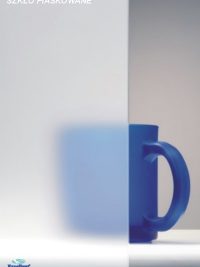Sandblasted glass is made by mechanical, full-surface frosting of one side of the sheet.
The top layer of the glass is evenly abraded under a high-pressure stream of sand, giving it a slightly rough, uniform, frosted surface.
Sandblasting is one of the simplest ways to obtain a milk-white, light-transmitting material.
On the other hand, the disadvantage of this method, resulting from the porosity of the sandblasted surface, is low resistance to dirt.
Sandblasted glass
Sandblasted glass
Sandblasted glass is made by mechanical, full-surface frosting of one side of the sheet.
The top layer of the glass is evenly abraded under a high-pressure stream of sand, giving it a slightly rough, uniform, frosted surface.
Sandblasting is one of the simplest ways to obtain a milk-white, light-transmitting material.
On the other hand, the disadvantage of this method, resulting from the porosity of the sandblasted surface, is low resistance to dirt.
Sandblasted glass is made by mechanical, full-surface frosting of one side of the sheet.
The top layer of the glass is evenly abraded under a high-pressure stream of sand, giving it a slightly rough, uniform, frosted surface.
Sandblasting is one of the simplest ways to obtain a milk-white, light-transmitting material.
On the other hand, the disadvantage of this method, resulting from the porosity of the sandblasted surface, is low resistance to dirt.
Wszystkie produkty
-
SANDBLASTED GLASS
Sanblasted glass



